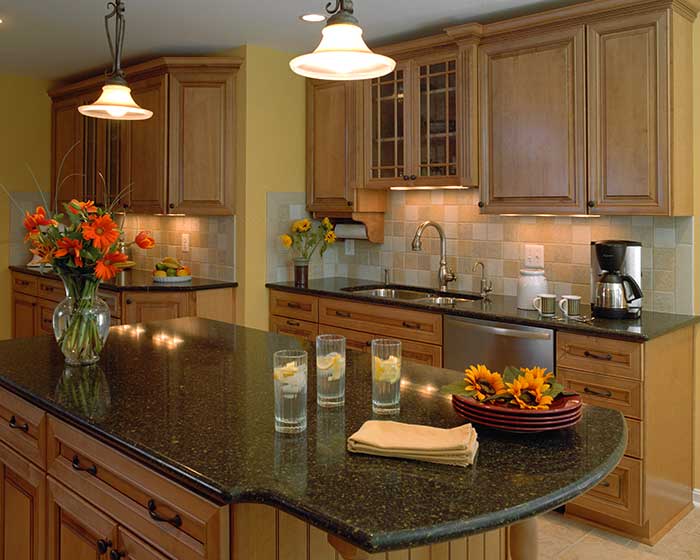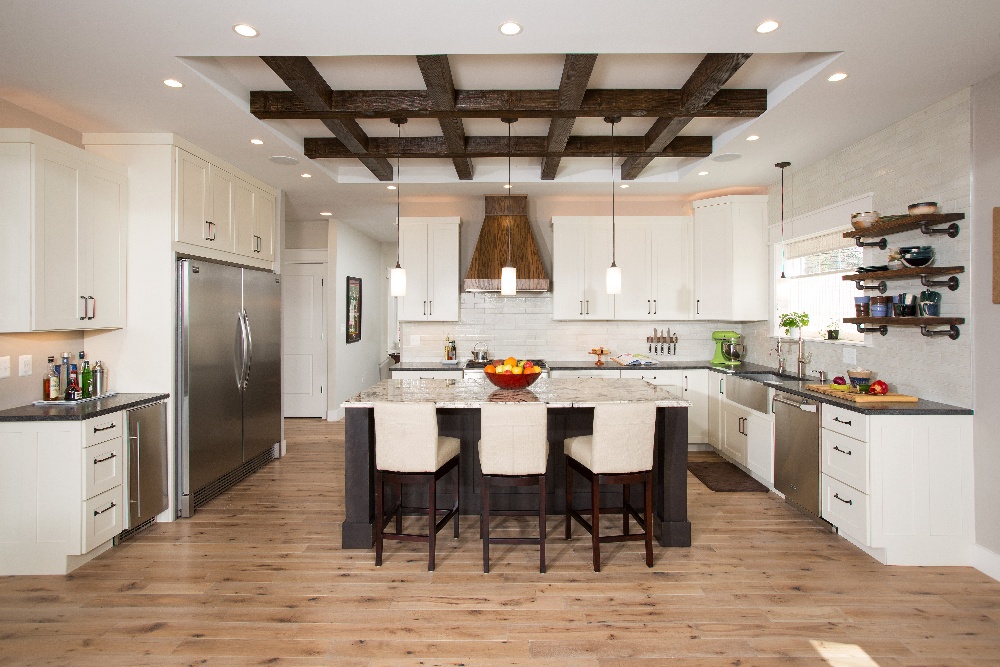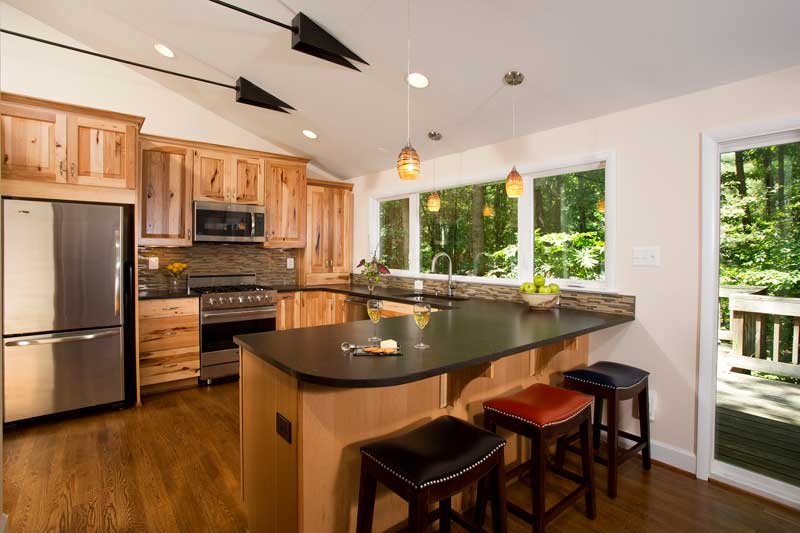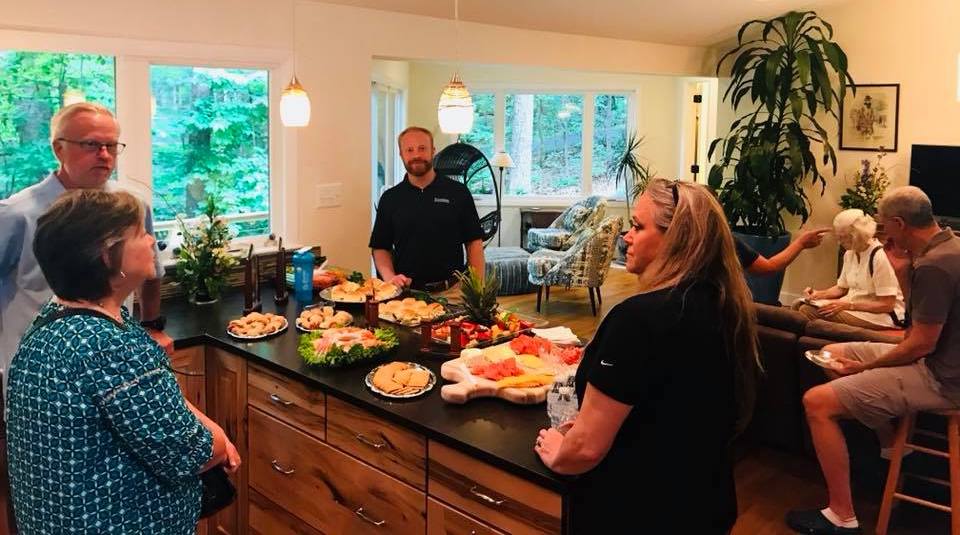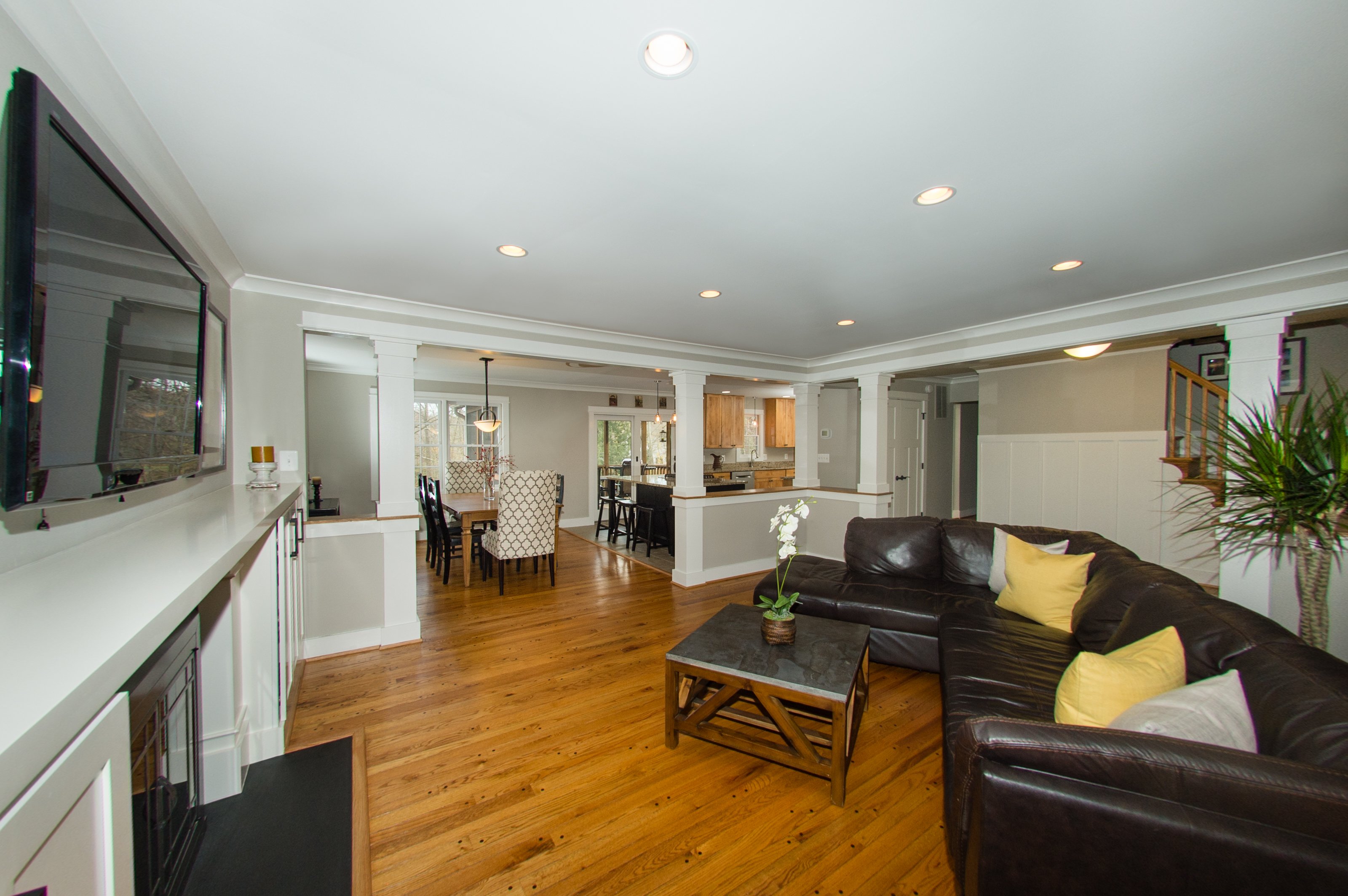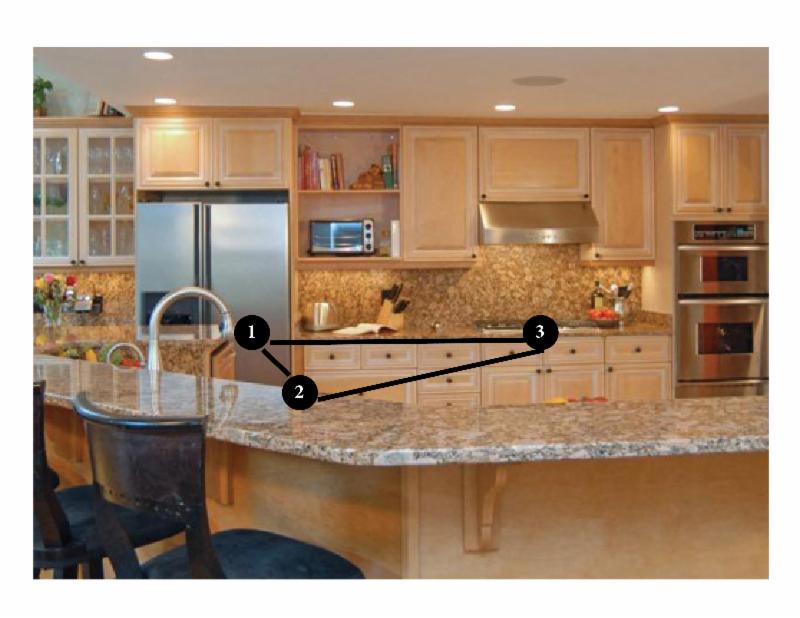Do you ever find yourself wishing your kitchen had a better layout? Are you longing for a spacious island where your family can hang out while you are cooking? Maybe you simply need to create zones to allow for two people to work in the kitchen at the same time. We completely understand the frustrations that come from having an unfunctional kitchen design and believe that the functionality of a space is just as important as its beauty. When we begin a kitchen remodel with a new client there are five important areas we discuss to gain a general understanding of their needs from a functional standpoint. If a kitchen remodel is in your future, you too may want to consider these items and share your answers with your designer.
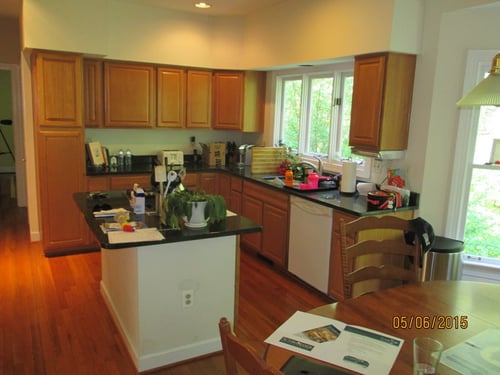 Photo taken before kitchen remodel.
Photo taken before kitchen remodel.
 After this kitchen was remodeled this family has taller cabinets allowing for more storage, a larger island that accommodates seating, and more sources of light.
After this kitchen was remodeled this family has taller cabinets allowing for more storage, a larger island that accommodates seating, and more sources of light.
Tips for Creating a Functional Kitchen Design
- What types of zones do you need? Make a list of any specialized cooking needs you have as well as non-cooking activities that you would like to do in your kitchen. Here are a few examples to get your juices flowing. Some families do a lot of baking or make their own pasta while others must have a dedicated coffee station. Large families often request beverage stations that are just outside of the main kitchen area or a spot where they can create a family communications center. If you entertain a lot you may want a serving station or an area for guests to sit that allows the chef to socialize.
- What type of storage is required? After you consider all of your basic needs and specialty zones, your storage needs will be easy to identify. You don’t have to figure out how to accommodate it all, that’s your designer’s job. Storage can be created with a combination of cabinetry, drawers, open shelving, pantries, and islands. Many designers will even plan out what will be stored in each and every cabinet or drawer to make sure there is room for everything.
- What type of appliances do you want? First, identify what want then you can find the specific models. How many burners do you want on your cooktop? Do you want to separate the cooktop and oven or do you want a combo range? What is your refrigerator preference? Side by side, freezer on top, or freezer on the bottom? Do you want a traditional style dishwasher or would you prefer a drawer style? Consider all the other appliances you want to include such as microwaves (above range, below counter or drawer style), warming drawers, wine or beverage refrigerators, built-in coffee makers, etc. You may have heard the term "kitchen triangle" before. Your appliances are a key part of creating this triangular traffic pattern which is created based on the positioning of your stove, refrigerator, and sink in a way that enables easy and efficient movement.
- Island, Peninsula or None? Many homeowners want an island or peninsula included in their design to create an eat-in space or to provide additional space for food prep and storage. In open concept floor plans these are helpful in creating a division between the kitchen and other spaces while allowing the chef to be a part of what’s happening when they are cooking. While on the flip side, some homeowners would prefer not to have an island or peninsula. Make sure to convey your preference to your designer so they can plan your layout accordingly.
- Lighting. Perhaps one of the most important aspects of any remodeling project is the lighting plan. In the kitchen, you will need ambient lighting such as a ceiling fixture and task lighting such as pendant lights over an island or under cabinet lighting. Accent lighting is the third part of a layered light plan and can include interior, above or under cabinet lighting.
There are other facets to creating a functional kitchen design, but we believe these are the most important and will guide the overall layout. If you would like to talk about improving your kitchen’s functionality, please contact us to get the conversation started.

